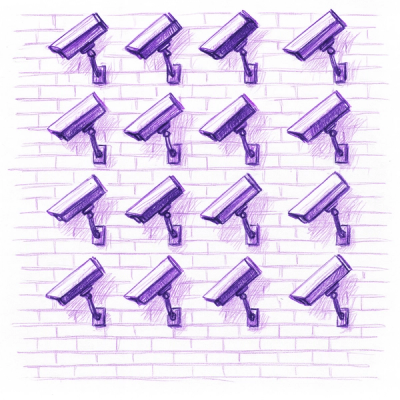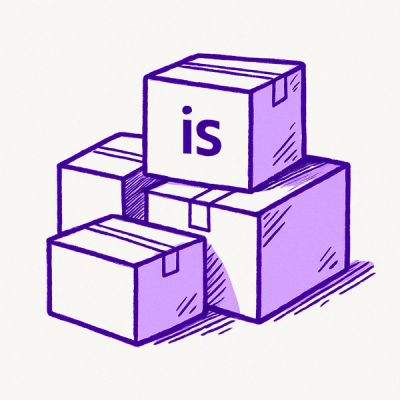
Research
/Security News
Toptal’s GitHub Organization Hijacked: 10 Malicious Packages Published
Threat actors hijacked Toptal’s GitHub org, publishing npm packages with malicious payloads that steal tokens and attempt to wipe victim systems.
org.codelibs.xerces:xercesImpl
Advanced tools
Xerces2 is the next generation of high performance, fully compliant XML parsers in the Apache Xerces family. This new version of Xerces introduces the Xerces Native Interface (XNI), a complete framework for building parser components and configurations that is extremely modular and easy to program. The Apache Xerces2 parser is the reference implementation of XNI but other parser components, configurations, and parsers can be written using the Xerces Native Interface. For complete design and implementation documents, refer to the XNI Manual. Xerces2 is a fully conforming XML Schema 1.0 processor. A partial experimental implementation of the XML Schema 1.1 Structures and Datatypes Working Drafts (December 2009) and an experimental implementation of the XML Schema Definition Language (XSD): Component Designators (SCD) Candidate Recommendation (January 2010) are provided for evaluation. For more information, refer to the XML Schema page. Xerces2 also provides a complete implementation of the Document Object Model Level 3 Core and Load/Save W3C Recommendations and provides a complete implementation of the XML Inclusions (XInclude) W3C Recommendation. It also provides support for OASIS XML Catalogs v1.1. Xerces2 is able to parse documents written according to the XML 1.1 Recommendation, except that it does not yet provide an option to enable normalization checking as described in section 2.13 of this specification. It also handles namespaces according to the XML Namespaces 1.1 Recommendation, and will correctly serialize XML 1.1 documents if the DOM level 3 load/save APIs are in use.
Xerces Java Build Instructions
------------------------------
===========================================================================
http://www.apache.org/licenses/LICENSE-2.0
Before building Xerces, you need the source package and tools package available from the Apache XML Project's distribution web page:
http://xml.apache.org/dist/xerces-j/
Download both the Xerces-J-src.X.Y.Z.zip and Xerces-J-tools.X.Y.Z.zip files for the appropriate Xerces release (where "X.Y.Z" is the version number) and extract them in the same directory. If you are using Unix, download the equivalent .tar.gz files instead of the .zip files.
You also need to have a Java Development Kit (JDK) version 1.2 (or higher) installed on your system. Before initiating any part of the build, set the JAVA_HOME environment variable to the installation directory of your JDK.
The Ant program is used to build everything in Xerces, including the documentation. This tool, and the others needed (besides the pre-requisite JDK) are contained within the tools package. To make building the packages easier, a Windows batch file and a Unix shell script are included.
If you only want to compile the source code and make the JAR files, run the following command on Windows:
build.bat jars
or from Unix (make sure that build.sh is executable):
build.sh jars
This will compile all of the source code and generate the JAR files that are available as part of the binary package. After building, these files will be located in the build/ directory.
If you want to build everything, including the documentation, run the build batch file (or shell script) specifying the "all" target instead of "jars".
FAQs
Xerces2 is the next generation of high performance, fully compliant XML parsers in the Apache Xerces family. This new version of Xerces introduces the Xerces Native Interface (XNI), a complete framework for building parser components and configurations that is extremely modular and easy to program. The Apache Xerces2 parser is the reference implementation of XNI but other parser components, configurations, and parsers can be written using the Xerces Native Interface. For complete design and implementation documents, refer to the XNI Manual. Xerces2 is a fully conforming XML Schema 1.0 processor. A partial experimental implementation of the XML Schema 1.1 Structures and Datatypes Working Drafts (December 2009) and an experimental implementation of the XML Schema Definition Language (XSD): Component Designators (SCD) Candidate Recommendation (January 2010) are provided for evaluation. For more information, refer to the XML Schema page. Xerces2 also provides a complete implementation of the Document Object Model Level 3 Core and Load/Save W3C Recommendations and provides a complete implementation of the XML Inclusions (XInclude) W3C Recommendation. It also provides support for OASIS XML Catalogs v1.1. Xerces2 is able to parse documents written according to the XML 1.1 Recommendation, except that it does not yet provide an option to enable normalization checking as described in section 2.13 of this specification. It also handles namespaces according to the XML Namespaces 1.1 Recommendation, and will correctly serialize XML 1.1 documents if the DOM level 3 load/save APIs are in use.
We found that org.codelibs.xerces:xercesImpl demonstrated a not healthy version release cadence and project activity because the last version was released a year ago. It has 0 open source maintainers collaborating on the project.
Did you know?

Socket for GitHub automatically highlights issues in each pull request and monitors the health of all your open source dependencies. Discover the contents of your packages and block harmful activity before you install or update your dependencies.

Research
/Security News
Threat actors hijacked Toptal’s GitHub org, publishing npm packages with malicious payloads that steal tokens and attempt to wipe victim systems.

Research
/Security News
Socket researchers investigate 4 malicious npm and PyPI packages with 56,000+ downloads that install surveillance malware.

Security News
The ongoing npm phishing campaign escalates as attackers hijack the popular 'is' package, embedding malware in multiple versions.